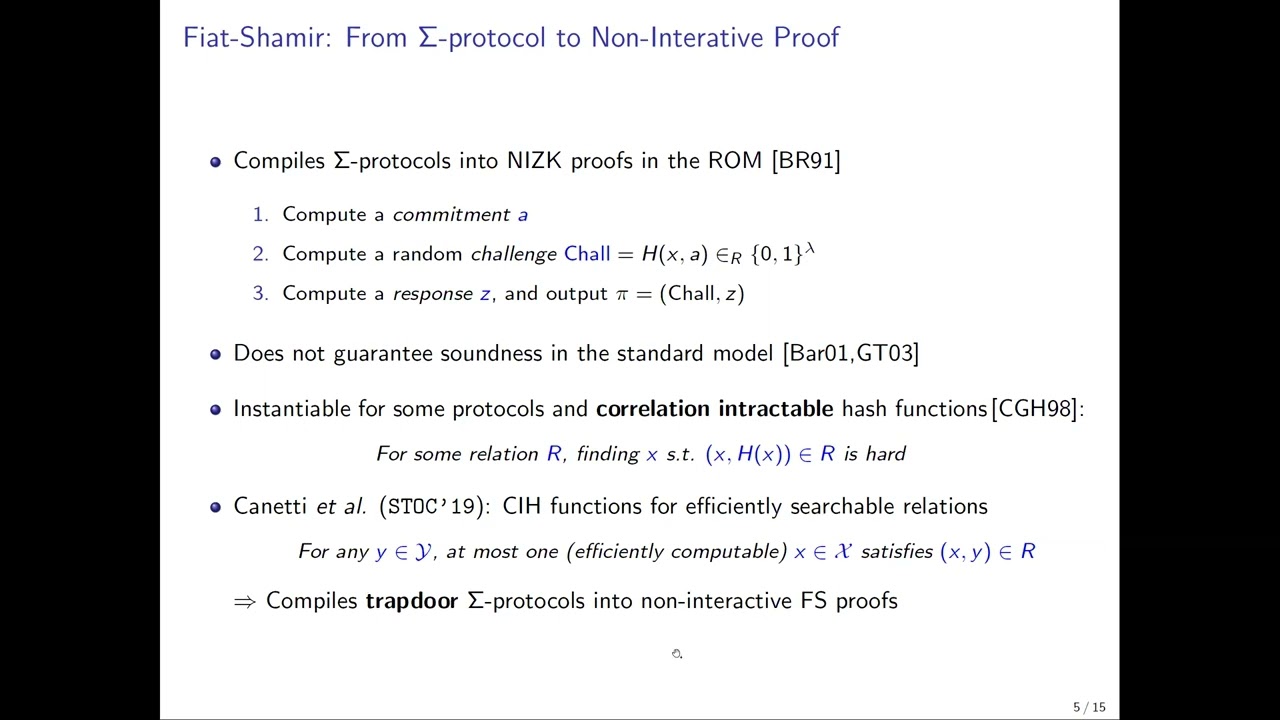Welcome to the resource topic for 2020/1334
Title:
One-Shot Fiat-Shamir-based NIZK Arguments of Composite Residuosity and Logarithmic-Size Ring Signatures in the Standard Model
Authors: Benoît Libert, Khoa Nguyen, Thomas Peters, and Moti Yung
Abstract:The standard model security of the Fiat-Shamir transform has been an active research area for many years. In breakthrough results, Canetti et al. (STOC’19) and Peikert-Shiehian (Crypto’19) showed that, under the Learning-With-Errors (LWE) assumption, it provides soundness by applying correlation-intractable (CI) hash functions to so-called trapdoor \Sigma-protocols. In order to be compatible with CI hash functions based on standard LWE assumptions with polynomial approximation factors, all known such protocols have been obtained via parallel repetitions of a basic protocol with binary challenges. In this paper, we consider languages related to Paillier’s composite residuosity assumption (DCR) for which we give the first trapdoor \Sigma-protocols providing soundness in one shot, via exponentially large challenge spaces. This improvement is analogous to the one enabled by Schnorr over the original Fiat-Shamir protocol in the random oracle model. Using the correlation-intractable hash function paradigm, we then obtain simulation-sound NIZK arguments showing that an element of \mathbb{Z}_{N^2}^\ast is a composite residue, which opens the door to space-efficient applications in the standard model. As a concrete example, we build logarithmic-size ring signatures (assuming a common reference string) with the shortest signature length among schemes based on standard assumptions in the standard model. We prove security under the DCR and LWE assumptions, while keeping the signature size comparable with that of random-oracle-based schemes.
ePrint: https://eprint.iacr.org/2020/1334
Talk: https://www.youtube.com/watch?v=cipx4FzvB5Y
Slides: https://iacr.org/submit/files/slides/2022/eurocrypt/eurocrypt2022/213/slides.pdf
See all topics related to this paper.
Feel free to post resources that are related to this paper below.
Example resources include: implementations, explanation materials, talks, slides, links to previous discussions on other websites.
For more information, see the rules for Resource Topics .
